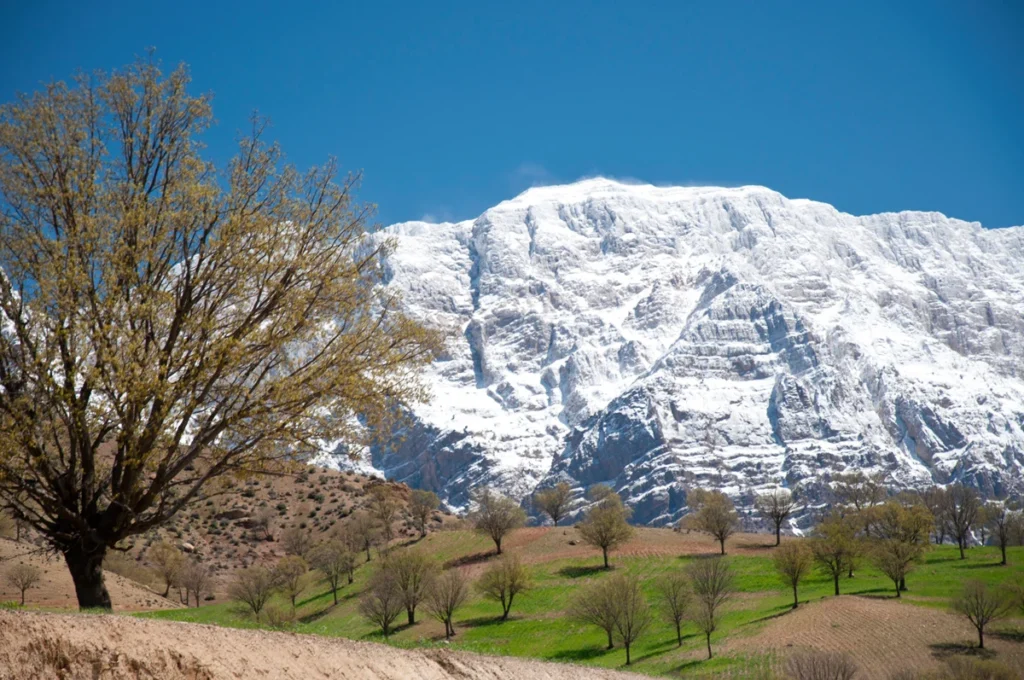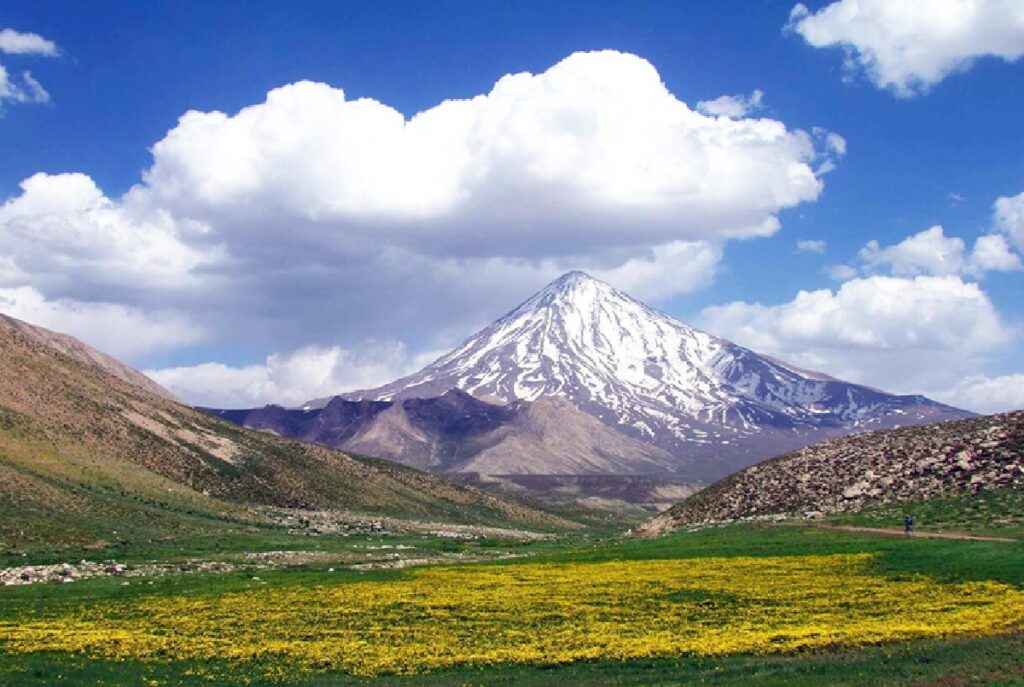Nestled in the heart of northwestern Iran, Mount Sahand stands as a majestic volcanic giant, revered as the “Bride of Iranian Mountains” for its snow-capped peaks and lush, flower-strewn slopes. Located just 50 kilometers south of Tabriz, this dormant stratovolcano rises to an elevation of 3,707 meters, dominating the skyline of East Azerbaijan Province. Beyond its geological grandeur, Sahand holds deep cultural significance, woven into Persian poetry, folklore, and spiritual traditions. For trekkers, it offers a unique blend of challenging trails, serene alpine meadows, and glimpses into rural Iranian life.
The mountain’s volcanic legacy has shaped its fertile valleys, creating a haven for biodiversity and sustaining centuries-old villages like Kandovan, famed for its cave dwellings. Whether you’re drawn by the allure of summiting a volcanic peak, exploring wildflower fields, or immersing in local culture, Mount Sahand promises an unforgettable adventure. This guide unpacks everything you need to know—from its fiery geology to practical trekking tips—for those planning trekking tours in Iran.
Geology and Natural Features of Mount Sahand
Mount Sahand’s origins trace back millions of years to intense volcanic activity during the Miocene and Pliocene epochs. Today, its dormant craters and jagged ridges tell a story of eruptions that once sculpted the surrounding plains. The mountain’s highest peak, Jam Daqiq, offers panoramic views of the Sahand Protected Area, a UNESCO-recognized biosphere reserve.
What sets Sahand apart are its diverse ecosystems. Lower slopes are blanketed in oak and juniper forests, while alpine zones burst into life each spring with vibrant wildflowers like irises, tulips, and poppies. The mountain’s volcanic soil feeds pristine rivers such as the Sahand Chay, which nourish terraced farms and orchards. Wildlife enthusiasts might spot Armenian sheep, golden eagles, or the endangered Caucasian leopard in remote areas.
For trekkers, Sahand’s terrain is both a challenge and a marvel. Trails wind through ancient lava flows, past mineral-rich hot springs, and into valleys dotted with glacial lakes. Its geological diversity ensures no two hikes are the same, making it a bucket-list destination for adventure tours in Iran.
Climbing and Exploration of Sahand Mountain
Climbing Mount Sahand is a rite of passage for seasoned trekkers and casual hikers alike. The most popular route begins near the village of Varkaneh, ascending through meadows and rocky outcrops to Jam Daqiq’s summit. This 12-kilometer trek takes 6–8 hours, demanding moderate fitness but rewarding climbers with sunrise views over Tabriz and Lake Urmia.
For a multi-day expedition, the Gonbad-e Kavous Trail traverses Sahand’s northern slopes, passing nomadic encampments and hidden waterfalls. Local guides often recommend camping near Gushayesh Spring, where trekkers can refill water bottles and rest under star-lit skies. Cultural highlights include the 13th-century Hermitage of Sheikh Hassan, a stone monastery clinging to Sahand’s cliffs, and interactions with Kurdish and Azeri villagers renowned for their hospitality.
While Sahand lacks the technical demands of Iran’s higher peaks like Damavand, its unpredictable weather and loose volcanic scree require careful preparation. Hiring a local guide is advisable for navigating lesser-marked paths and understanding the mountain’s ever-changing moods.
Best Time to Climb Mount Sahand
Timing is critical for a successful Sahand trek. Late spring (May–June) is ideal, as melting snow reveals blooming meadows and temperatures hover between 10°C and 20°C. By July, the alpine flowers fade, but summer offers stable weather for summit attempts.
Autumn (September–October) paints the slopes in golden hues, though early snowfall can close higher trails. Winter transforms Sahand into a snowy wonderland, but sub-zero temperatures and avalanche risks make it suitable only for experienced mountaineers with specialized gear.
Avoid the rainy season (April) when trails turn muddy, and fog obscures visibility. For photographers, early mornings in spring or autumn provide magical lighting over Sahand’s volcanic ridges.
Safety and Travel Tips for Sahand Trekking
Physical Preparation: Build endurance with cardio exercises; altitude, though moderate, can strain untrained hikers.
Gear Essentials: Pack sturdy boots, layered clothing, a GPS device, and a first-aid kit. Nights are chilly even in summer.
Altitude Awareness: Acclimatize in Tabriz (1,350 meters) before ascending. Hydrate frequently to avoid altitude sickness.
Local Guides: Engage certified guides familiar with Sahand’s trails and weather patterns.
Weather Checks: Sudden storms are common. Monitor forecasts via apps like Windy.
Respect Nature: Carry out trash, avoid disturbing wildlife, and stick to marked paths to prevent erosion.
FAQs About Trekking Mount Sahand
Is Mount Sahand suitable for beginner trekkers?
Yes! Day hikes on lower slopes are beginner-friendly. Summit climbs require moderate fitness.
Do I need permits to trek Sahand?
No permits are required, but registering with local authorities in Tabriz is recommended for safety.
Can I combine Sahand with other trekking tours in Iran?
Absolutely! Pair it with trips to the Alborz Mountains or the deserts of Yazd for a diverse Iranian adventure.





















